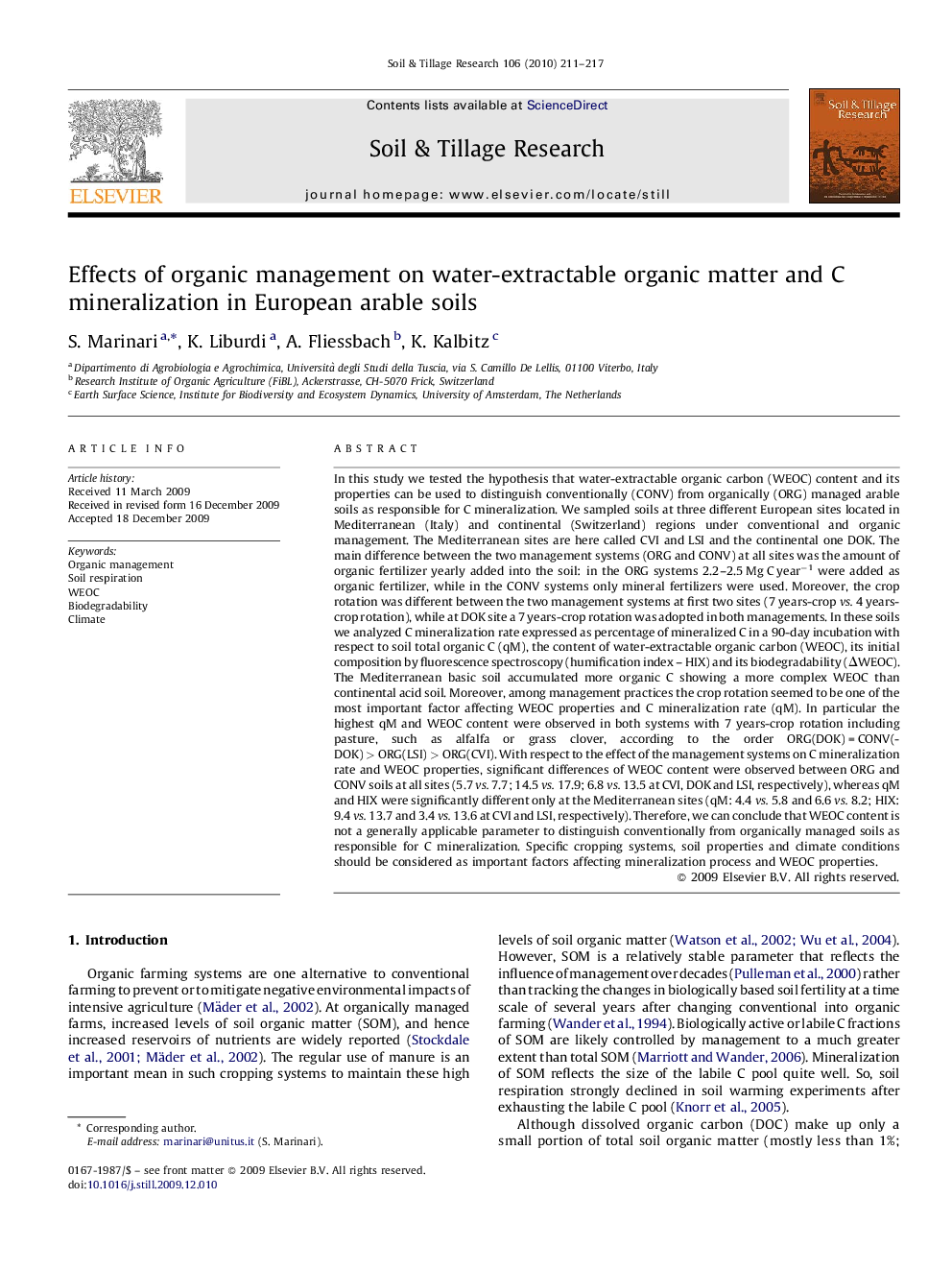| کد مقاله | کد نشریه | سال انتشار | مقاله انگلیسی | نسخه تمام متن |
|---|---|---|---|---|
| 306286 | 513088 | 2010 | 7 صفحه PDF | دانلود رایگان |

In this study we tested the hypothesis that water-extractable organic carbon (WEOC) content and its properties can be used to distinguish conventionally (CONV) from organically (ORG) managed arable soils as responsible for C mineralization. We sampled soils at three different European sites located in Mediterranean (Italy) and continental (Switzerland) regions under conventional and organic management. The Mediterranean sites are here called CVI and LSI and the continental one DOK. The main difference between the two management systems (ORG and CONV) at all sites was the amount of organic fertilizer yearly added into the soil: in the ORG systems 2.2–2.5 Mg C year−1 were added as organic fertilizer, while in the CONV systems only mineral fertilizers were used. Moreover, the crop rotation was different between the two management systems at first two sites (7 years-crop vs. 4 years-crop rotation), while at DOK site a 7 years-crop rotation was adopted in both managements. In these soils we analyzed C mineralization rate expressed as percentage of mineralized C in a 90-day incubation with respect to soil total organic C (qM), the content of water-extractable organic carbon (WEOC), its initial composition by fluorescence spectroscopy (humification index – HIX) and its biodegradability (ΔWEOC). The Mediterranean basic soil accumulated more organic C showing a more complex WEOC than continental acid soil. Moreover, among management practices the crop rotation seemed to be one of the most important factor affecting WEOC properties and C mineralization rate (qM). In particular the highest qM and WEOC content were observed in both systems with 7 years-crop rotation including pasture, such as alfalfa or grass clover, according to the order ORG(DOK) = CONV(DOK) > ORG(LSI) > ORG(CVI). With respect to the effect of the management systems on C mineralization rate and WEOC properties, significant differences of WEOC content were observed between ORG and CONV soils at all sites (5.7 vs. 7.7; 14.5 vs. 17.9; 6.8 vs. 13.5 at CVI, DOK and LSI, respectively), whereas qM and HIX were significantly different only at the Mediterranean sites (qM: 4.4 vs. 5.8 and 6.6 vs. 8.2; HIX: 9.4 vs. 13.7 and 3.4 vs. 13.6 at CVI and LSI, respectively). Therefore, we can conclude that WEOC content is not a generally applicable parameter to distinguish conventionally from organically managed soils as responsible for C mineralization. Specific cropping systems, soil properties and climate conditions should be considered as important factors affecting mineralization process and WEOC properties.
Journal: Soil and Tillage Research - Volume 106, Issue 2, January 2010, Pages 211–217